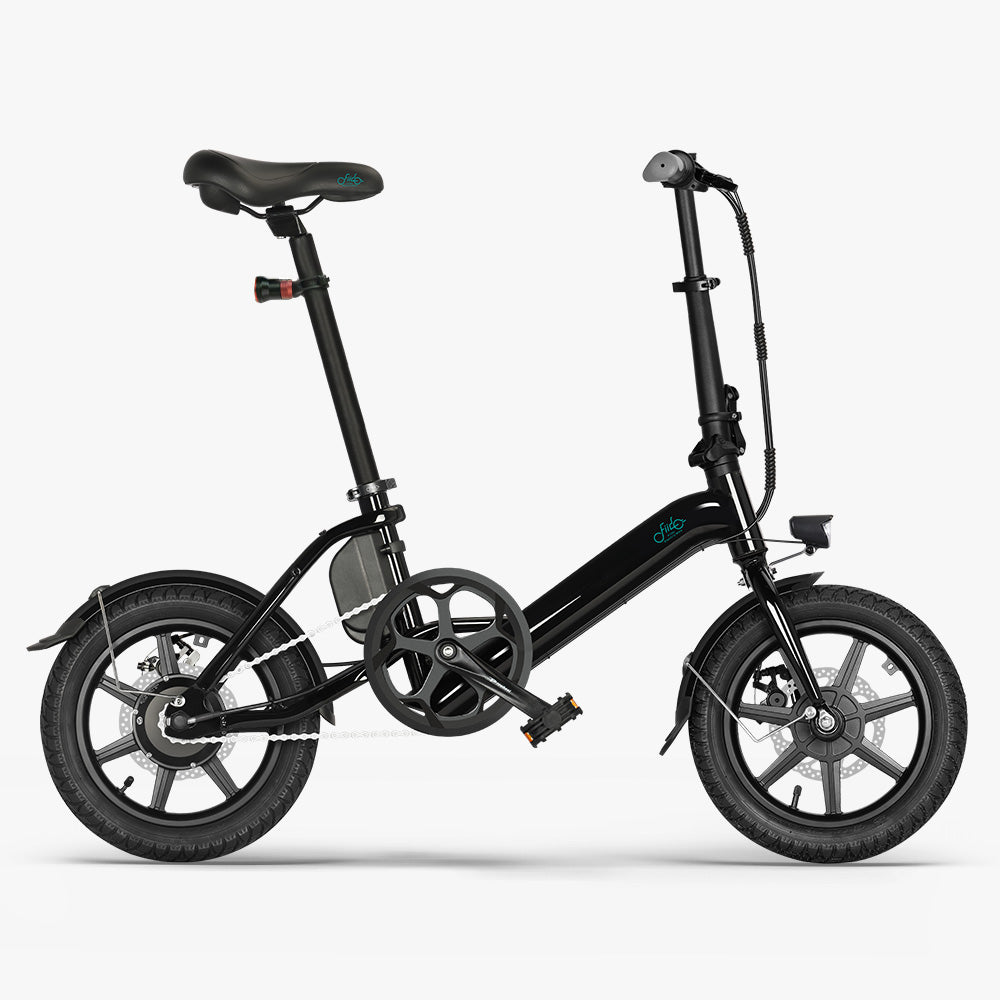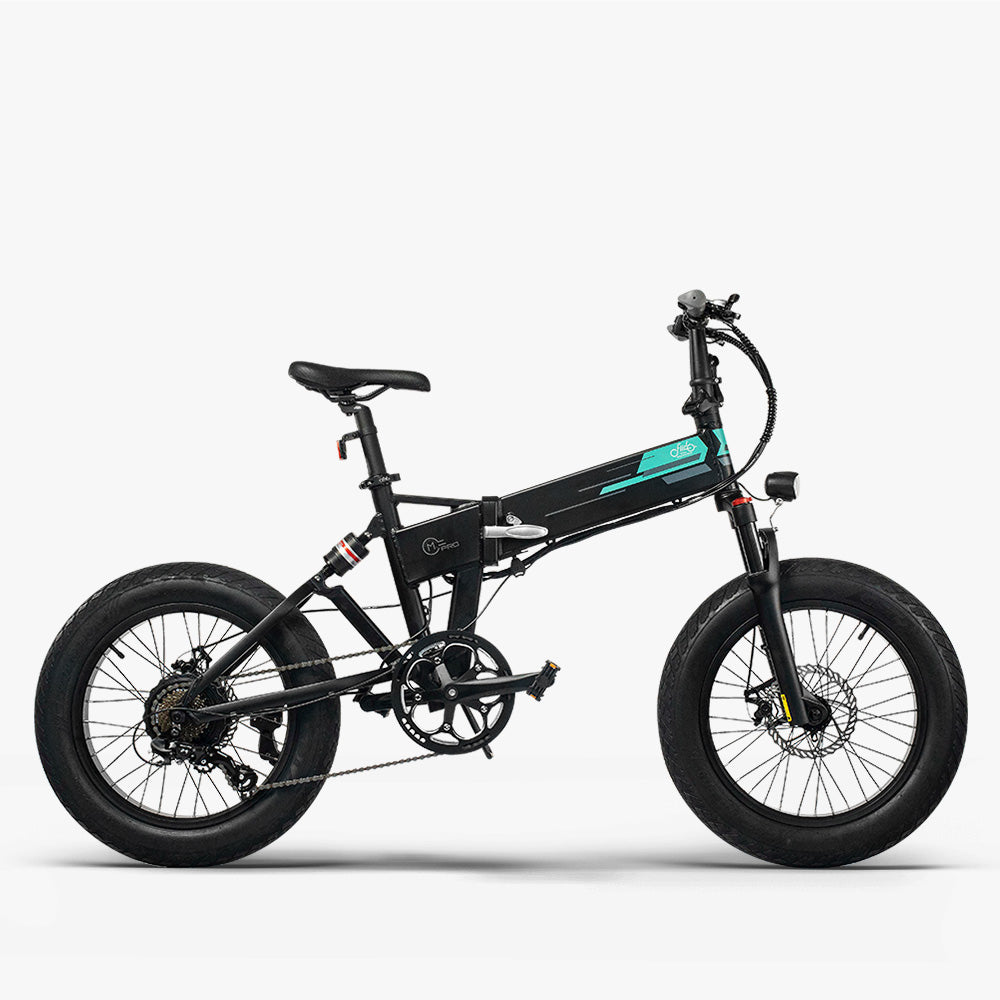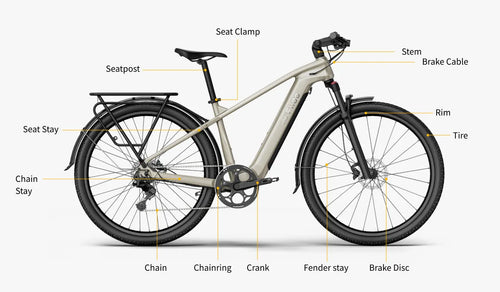Electric assistance systems for bicycles are gaining popularity, especially in cities and on difficult terrains. This technology allows riders to cover longer distances with less effort, making electric bikes convenient for many users. However, like any electronic device, malfunctions can occur: the motor may not start, there may be a loss of power, or the electric assistance may fail while pedaling. These issues can appear suddenly or worsen gradually, making the electric bike more difficult to use.
Common Causes of Malfunctions in Electric Assistance Systems
1. Battery Issues
The battery is the heart of any electric assistance system, and it is often the first component to check when a problem arises. Lithium batteries, widely used in electric bikes, have a limited lifespan that depends on the number of charge cycles. Over time, batteries may lose their ability to store or deliver energy efficiently, especially if they are not properly maintained.
-
Worn or Old Battery
If the battery is old or damaged, it may no longer be able to provide enough energy to power the electric motor. This leads to a reduction in assistance or a complete system shutdown. Battery lifespan varies depending on usage and maintenance; poor maintenance can significantly reduce its longevity. -
Check the Battery Connection
Sometimes, an issue can come from a loose or dirty battery connection. Ensuring the contacts are clean and properly connected is essential to making sure the system receives the necessary energy. Small dust particles or corrosion can often interfere with the current flow. -
Charge Status
A discharged or insufficiently charged battery will not be able to supply power to the motor. It is important to check that the battery is fully charged before assuming it is faulty. Some electric assistance systems also include charge indicators that can quickly help identify battery-related issues.

2. Motor Failure
The motor is another critical component of the electric assistance system. If the motor does not start or operates irregularly, it may indicate a problem. The motor converts the electrical energy stored in the battery into mechanical power to assist the rider, and a malfunction can significantly reduce the bike’s efficiency.
-
Overload or Wear
The motor may not function properly if it has been overloaded or shows signs of wear. Electric bikes designed for difficult terrains can suffer damage more quickly due to intensive use. For example, steep and long climbs or excessive loads can put stress on the motor, reducing its lifespan. Some bike models are equipped with overload protection systems, but not all. -
Overheating
Another issue that can arise with intensive motor use is overheating. Excessive heat can damage the internal components of the motor, leading to permanent failure. It is important to stop and allow the motor to cool down after prolonged use. -
Unusual Noises or Sudden Stop
If the motor emits unusual sounds or suddenly stops, this could indicate a mechanical problem or a short circuit. It is always advisable to check for any abnormal noises or vibrations while using the motor. In some cases, it may be necessary to open the motor compartment for a deeper inspection or consult a technician for a thorough check-up.

3. Problem with the Pedal Sensor
The pedal sensor is responsible for detecting the cyclist’s movement and activating the motor based on speed and pedaling cadence. A sensor malfunction can cause a delay or lack of response from the assistance system. This sensor is essential for the proper functioning of the system, as it informs the motor when and how much assistance to provide.
-
Sensor Malfunction
If the sensor does not correctly detect pedaling movement, the electric assistance may not activate. The issue may be caused by a misaligned or damaged sensor. Dust, dirt, or moisture can compromise the sensor’s sensitivity, leading to malfunctions. Even small shocks or vibrations while riding the bike can displace the sensor. -
Check the Sensor Positioning
It is important to check that the pedal sensor is correctly positioned and not obstructed by dirt or debris. If necessary, adjust or clean it. Some electric bike models allow manual adjustment, while others require technical intervention.
4. Controller Failure
The controller is the unit that manages the operation of the electric assistance system, coordinating information from the sensors, battery, and motor. It acts as the "brain" of the system, regulating energy flow and commands.
-
Defective Controls
A faulty controller can cause system malfunctions, such as a lack of motor response or irregular assistance. The motor may work intermittently, or the electric assistance may activate only at certain times. -
Controller Reset
In some cases, resetting the controller or checking for visible errors using possible error codes on the display can help. Many modern controllers have self-diagnostic systems that facilitate problem identification.
5. Wiring Connection Issues
The electrical connections and cables linking the different components of the electric assistance system should also be checked. Small connection issues are often the cause of system malfunctions.
-
Loose or Disconnected Cables
Loose or disconnected wiring can prevent the system from functioning properly. Check that all cables are securely connected and show no signs of wear or cuts. The electrical system of an e-bike is complex, with multiple cables transmitting signals between the battery, sensors, and motor. -
Worn Cables
If cables show signs of wear, such as fraying or breaks, they may need to be replaced to restore proper system function. Cables can deteriorate due to exposure to the elements or intensive use.
Steps to Resolve Electric Assistance Issues
Once the possible causes of the malfunction have been identified, here are some steps to follow to resolve the problems.
- Check the battery level and charge status: Before inspecting other components, make sure the battery is fully charged and functioning properly.
- Test the motor and sensor functions: Test the motor and the pedal sensor to determine if they are the source of the problem. If the motor makes unusual noises or the sensor does not detect pedaling, these could be the main causes.
- Check the wiring and control system: Ensure that all cables are securely connected and in good condition. If the controller has a user interface, check for any error codes.
- Seek professional maintenance service: If you are unable to resolve the issue yourself or are not comfortable with repairs, it is advisable to consult a professional to avoid further damage to the system.

Tips for Choosing a High-Quality Electric Bike
If you want to avoid common issues with electric assistance, it is essential to choose a high-quality electric bike. Here are some recommended options:
1. Fiido D3 Pro Electric Bike
The Fiido D3 Pro mini electric bike is perfect for daily city commuting. Lightweight and compact, it features a high-efficiency battery that provides excellent range. Its intelligent assistance system responds quickly, ensuring a smooth and comfortable ride, even on long journeys.
Fiido D3 Pro Mini Electric Bike
The most affordable and adorable electric bike.
2. Fiido M1 Pro Electric Bike
For those looking for an all-terrain electric bike, the Fiido M1 Pro Fat Tire Electric Bike is an excellent choice. Designed to tackle rough terrains, it is equipped with a powerful motor and a sturdy frame. It is ideal for complex routes and long distances, thanks to its excellent electric assistance capabilities.
Fiido M1 Pro Fat Tire Electric Bike
The most cost-effective fat tire ebike for off-road adventures.
Conclusion
In summary, the most common issues with electric bike assistance are often related to battery, motor, sensor, controller, or wiring problems. By following proper inspection and maintenance procedures, most malfunctions can be resolved. Choosing a high-quality electric bike like the Fiido D3 Pro or Fiido M1 Pro fat tire electric bike ensures a more reliable and enjoyable riding experience.















